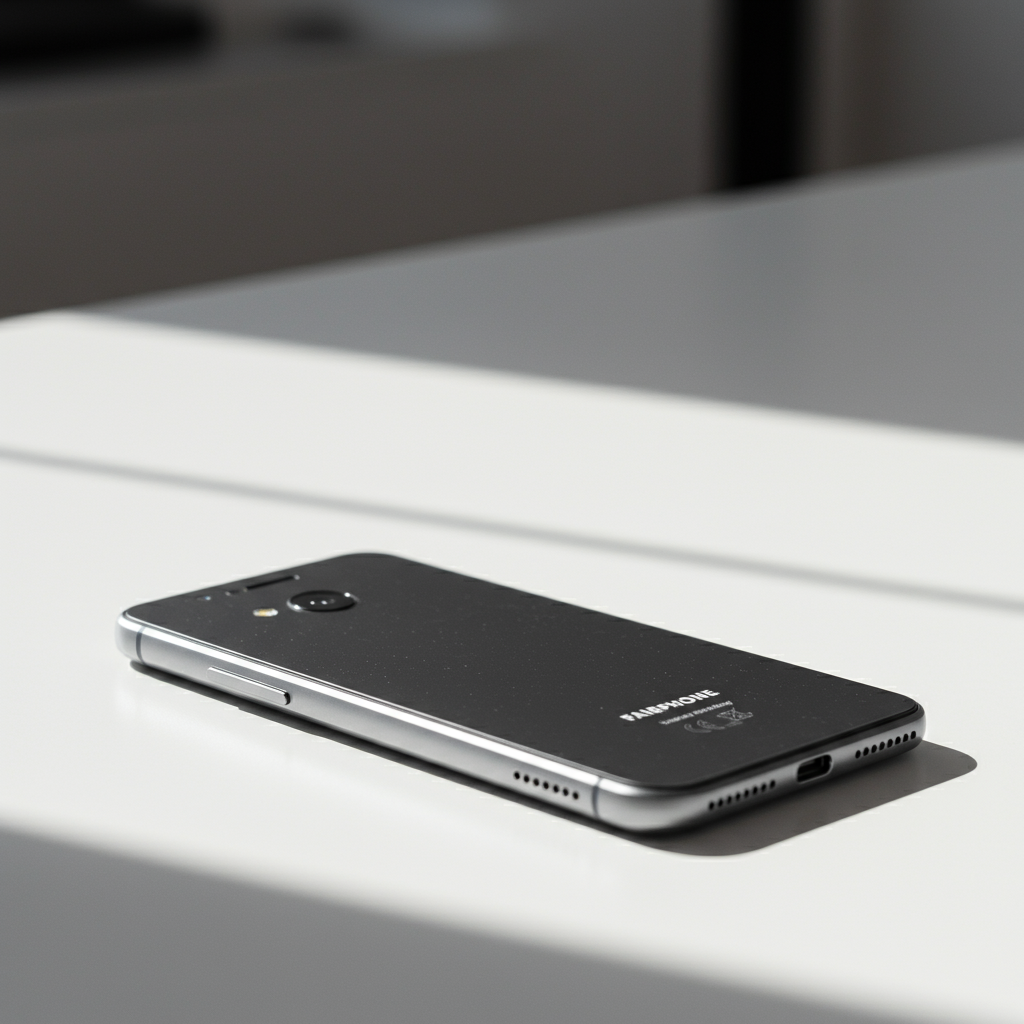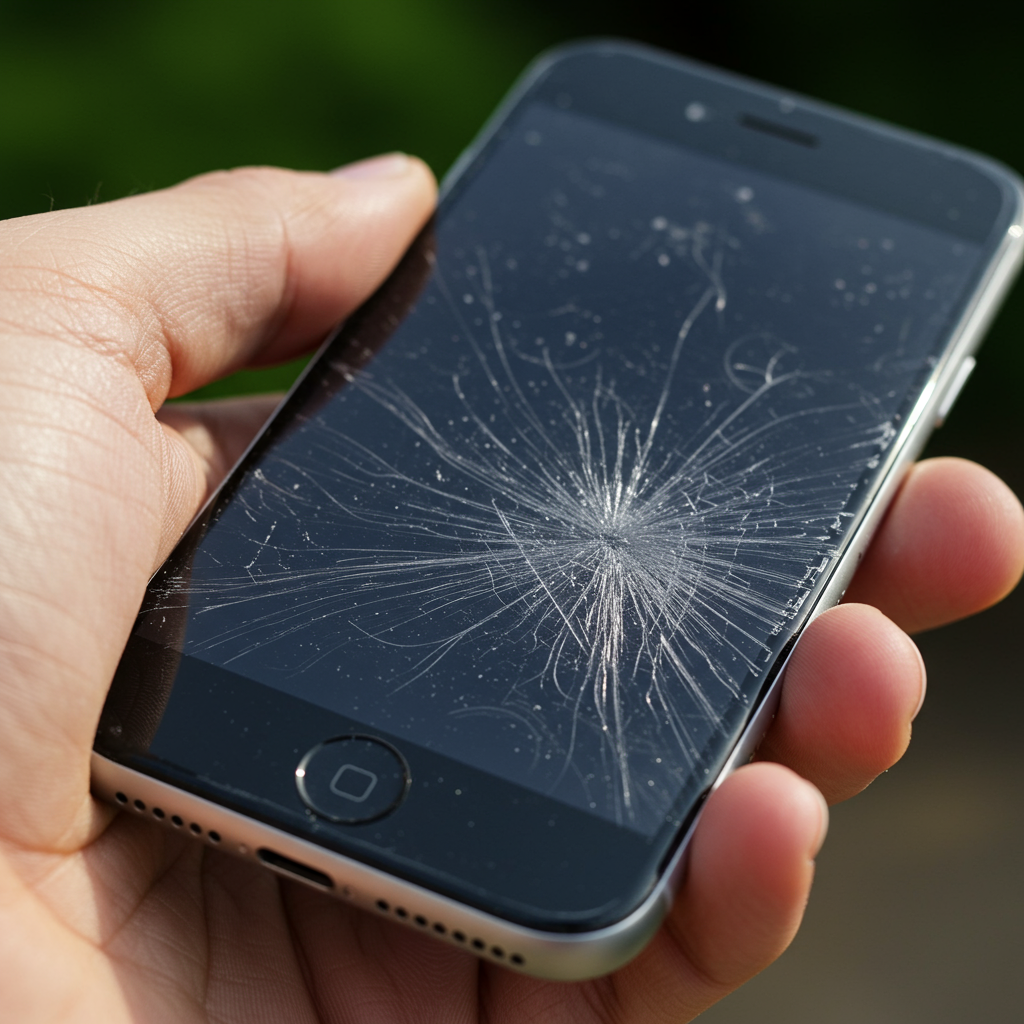Choosing a new smartphone often means juggling features, price, and brand reputation. But what if you also prioritized ethical production and longevity? The fairphone 6 enters this space, offering a unique proposition: a sustainable phone designed for repair, packed with intriguing new features. This review dives deep into whether Fairphone’s latest model successfully blends its core values with genuine usability and modern smartphone capabilities, making it a compelling choice beyond its eco-friendly credentials.
A Fresh Look and Feel
The Fairphone 6 sports a significantly revised design, marking a visual departure from previous generations. While the forest green option persists, new white and black colorways offer different aesthetics. The overall shape has changed, creating a distinct identity. Fairphone has also upped the durability ante, incorporating IP55 splash protection and rigorous drop test ratings from 1.5 and 1.8 meters. Gorilla Glass 7i protects the display, promising double the scratch resistance of its predecessor. A subtle indentation on the lower back provides a tactile aid for grip.
Visually, the most striking addition is the contrasting slider switch positioned above the power button. Fairphone calls this the “Switch,” and it serves multiple purposes. By default, it activates a unique feature called Fairphone Moments, but users can customize it to toggle flight mode, flashlight, power saver, Do Not Disturb, or even switch between light and dark display modes.
Repairability Evolves
Fairphone built its reputation on easy repairability, and the Fairphone 6 continues this legacy, albeit with slight changes from the Fairphone 5. Unlike its predecessor, accessing the battery on the Fairphone 6 requires a small Torx screwdriver to remove two screws, then sliding the lower back panel. Four additional screws secure the battery itself, and one more accesses its power connection. While this adds a step compared to the tool-free battery swap of the Fairphone 5, the fundamental principle remains: crucial components are designed for user replacement.
A total of twelve key parts are available for DIY repair. These include the battery, display, ear speaker, USB-C port, all three cameras, the bottom unit, the main speaker, and the top and bottom halves of the back panel. Even the SIM and microSD card holder can be replaced. Components like the processor and memory, however, remain integrated into the main housing. Accessing other internal parts involves removing additional screws – eight for the upper area components and seven for the lower unit. The display is secured by eight silver screws for straightforward removal. Despite the minor added complexity for the battery, the Fairphone 6 stands out as exceptionally easy for users to repair at home compared to typical smartphones.
Introducing Fairphone Moments and Versatile Accessories
Beyond sustainability and repair, the Fairphone 6 brings genuinely new features to the table. Fairphone Moments allows users to create personalized profiles tailored for specific situations. Imagine a “Work” profile limiting distracting apps, a “Quiet Evening” mode silencing non-essential notifications, or a “Holiday” setting controlling calls and background images. Users can select which apps are active, manage notification permissions, set call filtering rules, and even customize the look for each “Moment.” This feature transforms the smartphone’s behavior based on your current need, offering a level of control uncommon in standard Android interfaces.
Accessories also receive a new treatment on the Fairphone 6. While standard fare like flip cases and protective films are available, Fairphone introduces screw-on accessories. These include a card holder, a finger loop, and a lanyard, all attaching directly to the phone’s back panel via screws. This robust mounting system allows for combining multiple accessories, like a protective cover paired with a neck strap and finger holder. A small screwdriver and screws are conveniently included with relevant back elements and accessories. This approach feels reminiscent of modular designs seen in other experimental phones, offering a practical alternative to magnetic systems like Apple’s MagSafe.
Under the Hood: Performance and Display
The Fairphone 6 is powered by the Snapdragon 7s Gen 3 processor, paired with eight gigabytes of RAM. This represents a noticeable performance boost over the Fairphone 5’s less common QCM 6490 chipset. Benchmarks show the Fairphone 6 comfortably outperforming phones like the CMF Phone 2 Pro but landing on par with devices using the same Snapdragon 7s Gen 3, such as the Nothing Phone (3a). Storage comes in at a generous 256 gigabytes, expandable via microSD card.
Sporting a 6.31-inch OLED display with a sharp 2484 x 1116 pixel resolution, the Fairphone 6 is relatively compact by today’s standards. The display offers manual refresh rate options of 60, 90, or 120 hertz, providing satisfying visual fluidity. A typical brightness of 800 nits ensures comfortable outdoor use, an eight percent increase over the previous model.
Battery Life and Charging
The Fairphone 6 features a 4,415 mAh battery, a slight increase from the Fairphone 5’s 4,200 mAh capacity. However, this capacity is somewhat below the current smartphone average, which often hovers around 5,000 mAh (though those batteries are typically non-replaceable).
In PCMark 3.0’s battery test, the Fairphone 6 achieved an active usage time of 8 hours and 5 minutes. While sufficient for a standard day, this result trails behind many competitors that regularly exceed ten hours in the same test. Battery life remains an area with potential for improvement. Charging occurs via USB-C and supports speeds up to 30 watts. This is decent, allowing the battery to reach 50 percent capacity in approximately 25 minutes. Full charging takes roughly another hour, consistent with typical charging curves.
Camera Capabilities
On the rear, the Fairphone 6 houses a dual-camera system: a 50-megapixel main sensor and a 13-megapixel ultra-wide-angle lens. The front-facing camera boasts a high 32-megapixel resolution. Without a dedicated telephoto lens, zoom is limited to digital magnification.
Initial testing with non-final software yielded promising results. The main camera captures good detail and produces natural colors, with only occasional hints of excessive warmth in some shots. The dual digital zoom implementation is functional. The ultra-wide camera performs well in daylight, and the night mode enhances detail and focus in low-light conditions compared to the standard main camera. While the selfie camera struggled slightly with bright sunlight in initial tests, potential software updates could address this. Overall, the Fairphone 6 provides solid, usable image quality suitable for casual photography day or night, without setting new benchmarks in the mobile photography space.
Software Experience and Longevity Promise
The Fairphone 6 runs Android 15 out of the box. Aside from the unique Fairphone Moments feature, the pre-installed Fairphone app serves as a useful hub for ordering spare parts or accessing repair guides. True to its commitment to longevity, Fairphone offers an industry-leading software update policy. They promise updates for the Fairphone 6 until 2033, guaranteeing support for eight years. This significantly surpasses the update periods offered by major manufacturers like Samsung or Google, who typically offer seven years for their flagship devices, and far exceeds the three years of Android updates (six years of security updates) provided by mid-range phones like the CMF Phone 2 Pro or Nothing Phone (3a). For users seeking maximum longevity from their device, this extended support is a major advantage. Fairphone also continues its partnership with Murena, offering the Fairphone 6 with the Google-free /e/OS as an alternative operating system.
Fair and Ethical Production
Beyond the technical specifications, the Fairphone 6 upholds the company’s core values of fair production. The phone is manufactured under conditions intended to ensure fair wages, aiming for living wages for all workers involved. A notable 50 percent of the raw materials used are sourced fairly or are recycled. While many manufacturers have improved their recycling efforts over the years, Fairphone remains a leader in integrating fair sourcing and recycled materials into its devices.
Positioning and Value
The Fairphone 6 sits comfortably in the mid-range smartphone market. Compared to the Fairphone 5, it introduces several improvements, including performance, durability ratings, and unique software/accessory features. The recommended retail price has reportedly decreased, adding to its appeal.
However, when compared to conventional, often cheaper, mid-range competitors, potential trade-offs become apparent. The lack of a telephoto camera and relatively shorter battery life (compared to the high-end of the mid-range or some competitors focused purely on battery capacity) are notable points. Despite these, the Fairphone 6 remains well-suited for everyday tasks. Its true value lies in its unparalleled repairability, the extended software update promise far into the future, the availability of spare parts, and the ethical considerations baked into its production. For the environmentally conscious and those seeking a device with long-term viability and repair potential, the Fairphone 6 offers a compelling, albeit distinct, value proposition.
Frequently Asked Questions
How easy is it to repair the Fairphone 6 yourself, and what parts are replaceable?
The Fairphone 6 is designed for user repair, though it requires a small screwdriver for battery access, unlike its predecessor. You can easily replace twelve key components at home, including the battery, display, cameras, speakers, and USB-C port. Fairphone provides repair guides and sells spare parts directly, making it the most home-repairable smartphone currently available.
What are Fairphone Moments and the Switch, and how do they work?
Fairphone Moments is a unique software feature allowing you to create custom profiles for different scenarios (e.g., work, relaxation). Each Moment can control app availability, notifications, call settings, and even background images. The physical “Switch” on the phone’s side acts as a shortcut, primarily activating Fairphone Moments profiles by default, but configurable for other functions like airplane mode or the flashlight.
How does the Fairphone 6’s software update policy compare to other smartphones, and does this add long-term value?
The Fairphone 6 offers an industry-leading software update promise, guaranteeing support until 2033, providing eight years of updates. This significantly exceeds the typical 3-7 years offered by most other manufacturers. This extended support ensures the phone remains secure and functional for much longer, adding substantial long-term value and aligning with its sustainable design philosophy by reducing the need for frequent device replacements.
Conclusion
The Fairphone 6 successfully evolves Fairphone’s mission, presenting a sustainable, ethically produced, and remarkably repairable smartphone that doesn’t solely rely on its green credentials. The new design is a fresh step, the inclusion of unique features like Fairphone Moments and the accessory mounting system add genuine usability, and the performance is solid for a mid-range device. While battery life could be better and the camera system lacks a telephoto lens, these are trade-offs offset by the incredible commitment to longevity, repairability, and ethical sourcing. For users who prioritize a device that minimizes environmental impact, lasts for years with guaranteed updates and easy repair, and offers some truly unique features, the Fairphone 6 stands out as a brave and worthwhile choice in the smartphone landscape.




